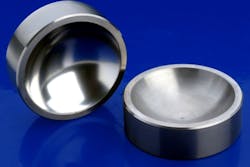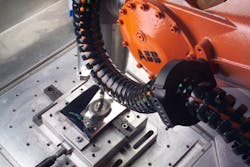Aachen, Germany – The tooling industry in Europe represents an annual turnover of 13 billion euros. In the manufacturing of injection and die casting molds, 12 to 15% of the manufacturing costs and 30 to 50% of the manufacturing time is taken up by polishing. The predominantly small and medium sized European companies that specialize in polishing dies and molds are currently facing low-cost competition from Asia. Furthermore, moving the surface finishing of the tools out of Europe is often only the first step - frequently, the whole added value of the tool manufacturing is moving in a second step.
To eliminate these drawbacks, a European consortium of innovative companies and R&D centers launched a 3.9 million euro project called poliMATIC in June 2010. This SME targeted collaborative project is funded for three years by the European Commission and coordinated by the Fraunhofer Institute for Laser Technology ILT and the Fraunhofer Institute for Production Technology IPT in Aachen, Germany.
The overall objective of poliMATIC is the development of two automated polishing techniques with a significantly shorter processing time than manual polishing, between 10 and 30 times shorter, and full CAD/CAM compatability. With these techniques the experienced workers in SMEs specialized in polishing can focus on the more complex parts of a tool.
The roughness of the surface of dies and molds is a crucial factor to meet the requirements of various applications. Therefore, in the European tooling industry, polishing techniques are widely used to achieve a suitable low surface roughness. However, the current automated techniques are polishing, electro-chemical polishing, or drag finishing. They typically present a non-uniform polishing quality on the molds and dies and lead to edge rounding and geometrical deviations. Furthermore, deeper cavities are harder to process. This is applicable on parts with free-form surfaces and function relevant edges like most tools feature.
Thus, polishing in the tooling industry is mostly done manually. The quality of manual polishing strongly depends on the worker’s skills and experiences to execute a very demanding but monotonous work. The scarce presence of skilled craftsmen on the market generates problems to companies all over Europe to recruit suitable employees. Due to the low processing speed (typically in the range of 10 to 30 min/cm²) and the sequential workflow, the production of molds and dies with manual polishing is time-consuming and cost-intensive.
Automated polished free-form surface with robot. Fraunhofer IPT.
Having outstanding advantages, the two proposed technological approaches in the project poliMATIC, both laser polishing (LP) and force-controlled robot polishing (FCRP), offer the prospect of strengthening the competitiveness of the European tooling industry by shorter process times for surface finishing. The project partners - 3 institutes and 12 companies from 8 countries - intend to implement LP and FCRP automated polishing techniques
During the poliMATIC project, processing strategies for 3D parts and a knowledge-based CAx-framework will be developed. Another task of the project is the long time test of automated polished tools. In order to assess the automated polishing techniques in comparison to manual polishing, new measurable surface quality criteria will also be investigated. The results of the poliMATIC project will be demonstrated by automated polished complex shaped molds and dies from industrial partners.
For questions regarding this topic contact: [email protected] or [email protected]

